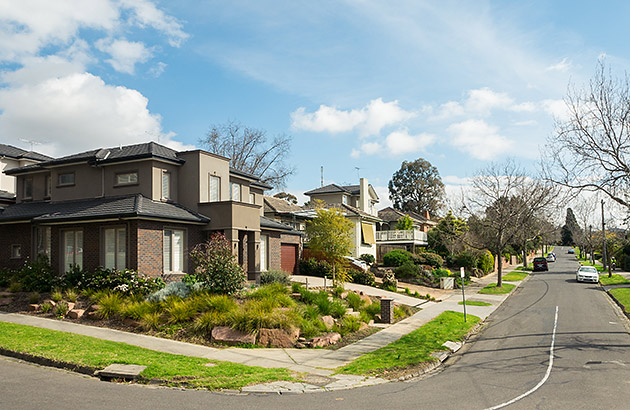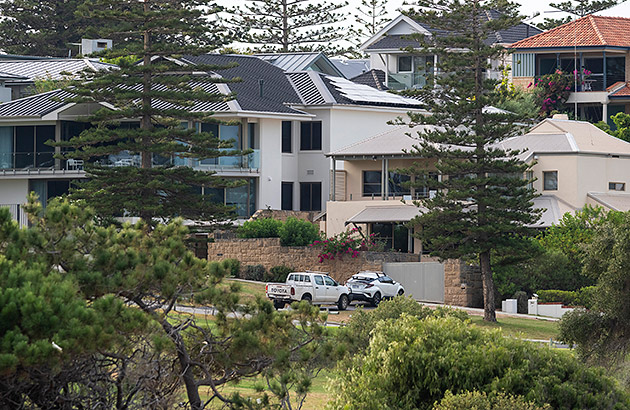Forgetting to properly secure a window or leaving a door unlocked from time to time will certainly make your home more vulnerable to a break-in, but only if it’s chosen.
The risk of becoming a home burglary victim will depend on the opportunities your home presents at the time.
Signs of a home being temporarily unoccupied could increase your burglary risk, but there are other physical features of a property and its surrounds that may make it more attractive to burglars.
That initial decision an offender makes to choose your home over others can be based on a number of factors, including how accessible it is from the street and its level of exposure to the street.
Some homes may be more vulnerable than others due to their position on the block or because of some other external features.
Being aware of all the ways in which your home may become a burglary target and why, will help you make better choices when considering how to increase your household security.
Here are five key ways a home can appear more burglary-prone from the outside.
1. Corner blocks
Burglars love to be hidden from view when breaking into a home and although homes on corner blocks and at intersections are well exposed to the street and to passing traffic, they don’t have the added protection of being butted up against the fence lines of two other properties where people might be home.
Increased street access also makes homes on corner blocks and intersections easier to get away from, putting them at greater risk of burglary. If you have an alarm, make sure it is always armed when you leave the home, even if you’ll only be gone for a short period - burglars don’t need long to break in.
The 2019 RAC Home Security Survey found that 21 per cent of homeowners don’t usually activate their security system before leaving home.

2. Open access to backyard
Being able to easily get into your backyard from the street means a burglar can too, and that means they can also be hidden from the street and neighbours while breaking into your home. They could also use tools or garden equipment to break in. A visibly open backyard with no gate or barrier will increase this risk.
Having items stolen from the front or backyard was the most common home security incident reported in RAC’s Home Security Survey. If you do have a backyard gate, always keep it locked. If your gate is accessed regularly making access via a key impractical, consider a keypad lock. And if your backyard is an open invitation with no barrier at all, a fence or lockable gate is highly recommended.
RELATED:
4 reasons to get CCTV cameras at home »
3. Hidden house front
Burglars like houses where they can be hidden from the street by shrubs, foliage and other barriers while breaking in. Try to avoid landscaping features that obstruct a clear view of your home from the street. If your front windows are screened by shrubs, consider cutting the foliage back to reduce the spaces where burglars can hide while breaking in.
Whether your house front is hidden or in plain sight, never leave a spare key outside. The RAC Home Security Survey found one in every three people kept spare house keys outside their home.

4. No enclosed garage
Homes without an enclosed garage or carport could provide burglars with a big clue as to whether there is someone at home. An open carport with valuable cars parked in it could be another incentive.
If you have an open carport which could be enclosed, consider this as a way of adding some extra security to your home. If you already have an enclosed carport or garage, check how easy it may be to open it without a remote. If it’s not hard to get in and you have a door in the carport that provides access directly into your home, get into the habit of keeping that access door locked at all times.
5. Multiple access points
Houses with laneway access give a burglar a second way to get into your backyard without being exposed to the street. Similarly, for houses on cul-de-sacs, pedestrian access in and out of the cul-de-sac can also impact on crime risk, according to the WA Planning Commission’s Designing Out Crime planning guidelines.
Ensure any laneway or pedestrian access areas are well lit with a sensor light. If you have a rear carport accessed via a laneway and an existing home alarm, consider a sensor light and CCTV camera to cover the carport structure.
.jpg?modified=20201204024801)
Ready to upgrade your home's security system?
RAC members save 10% on CCTV cameras, alarm systems and a range of other home security products.
Last updated: December 2021
